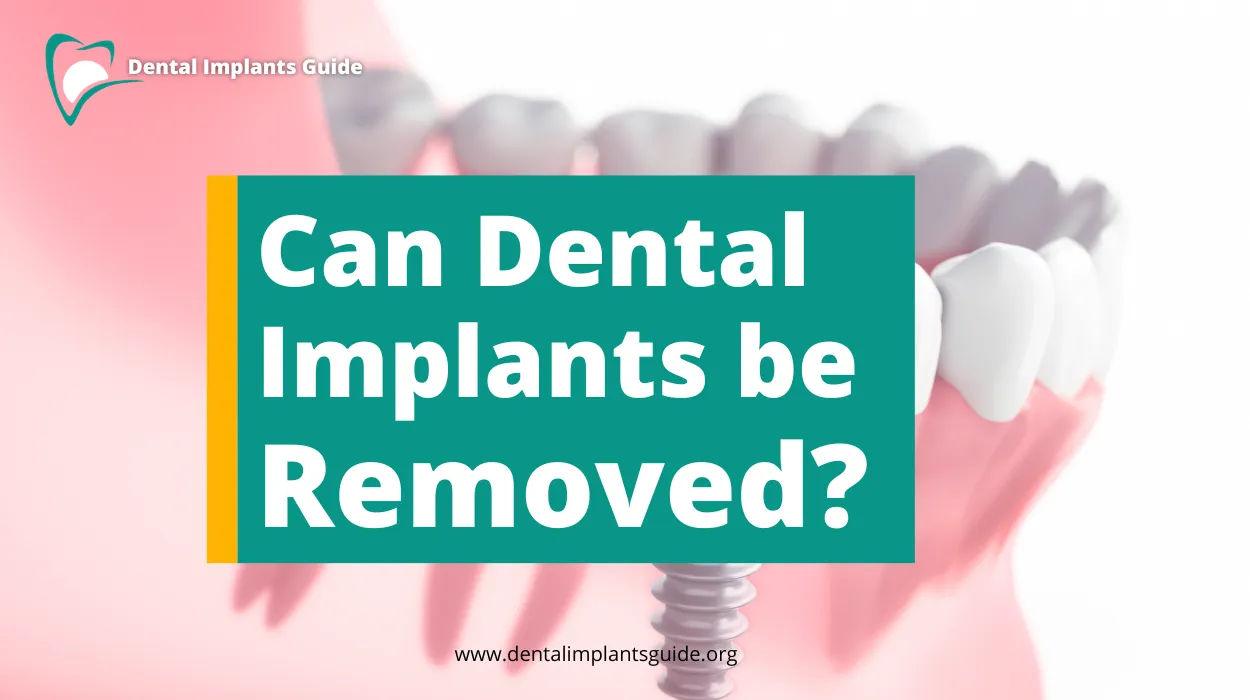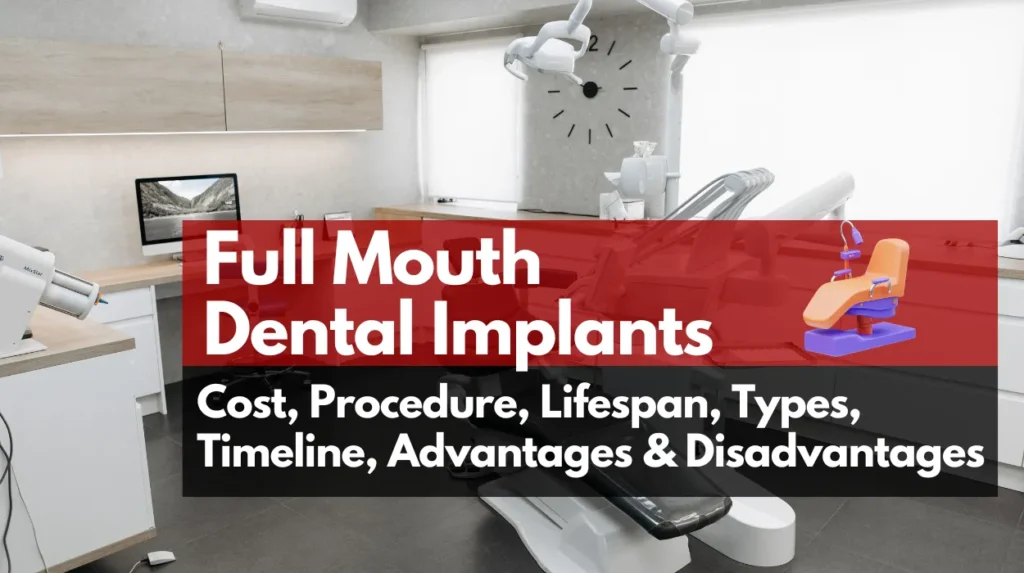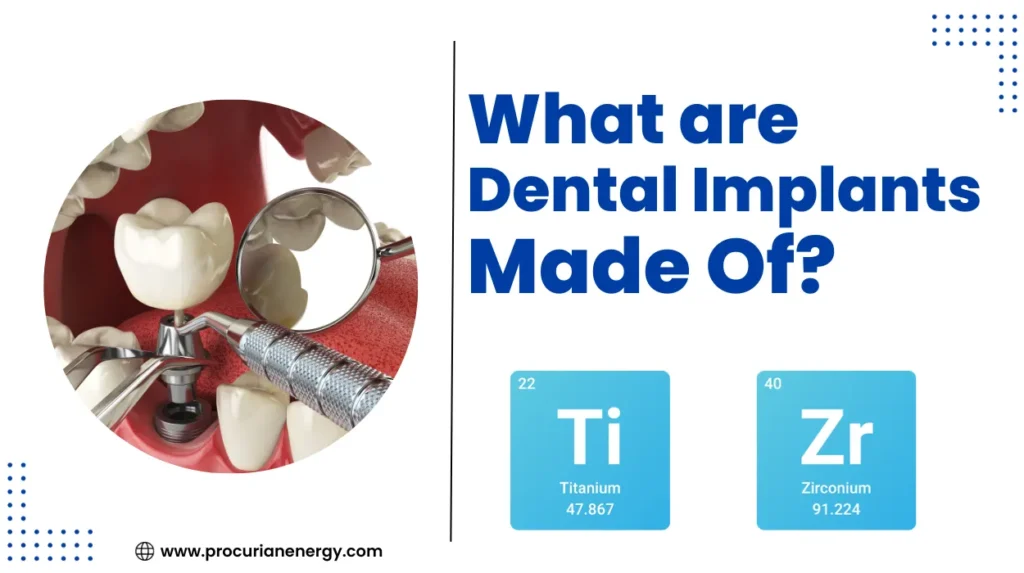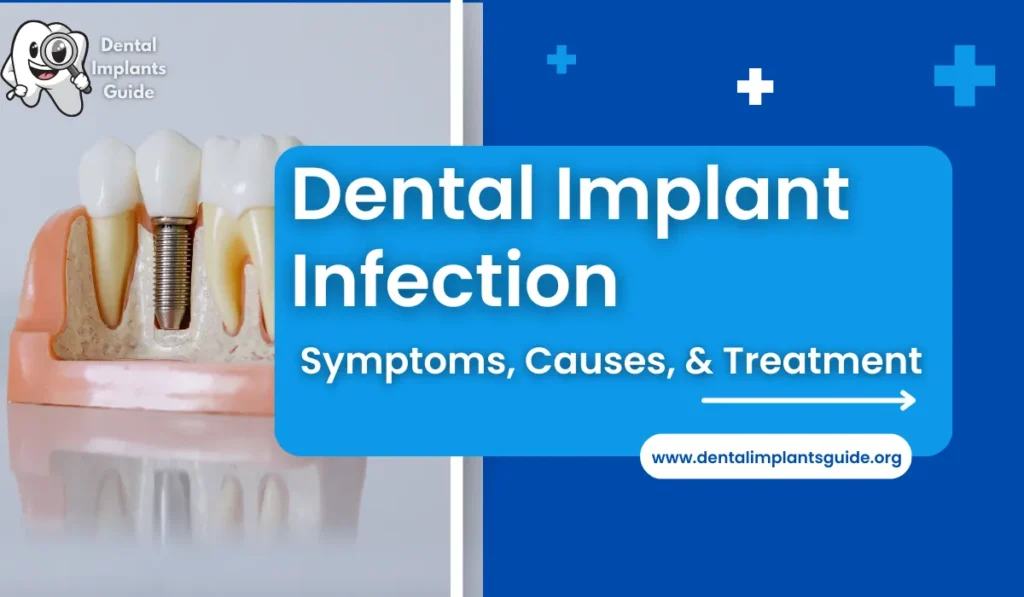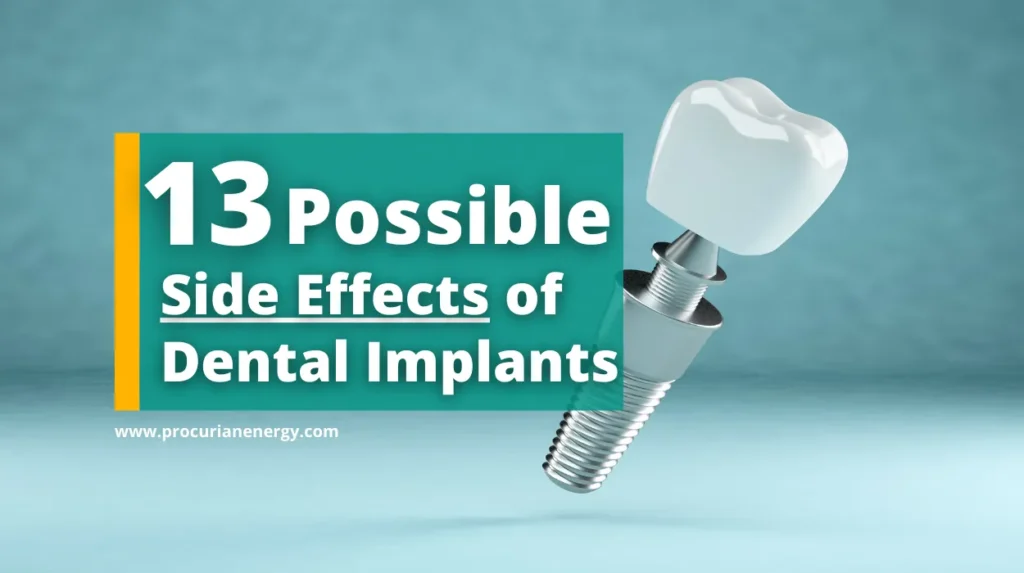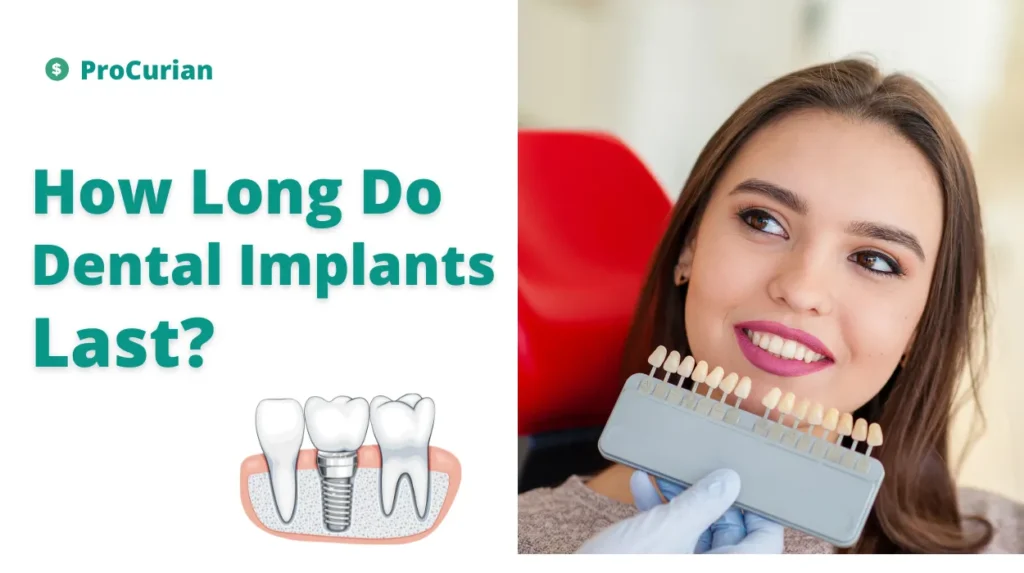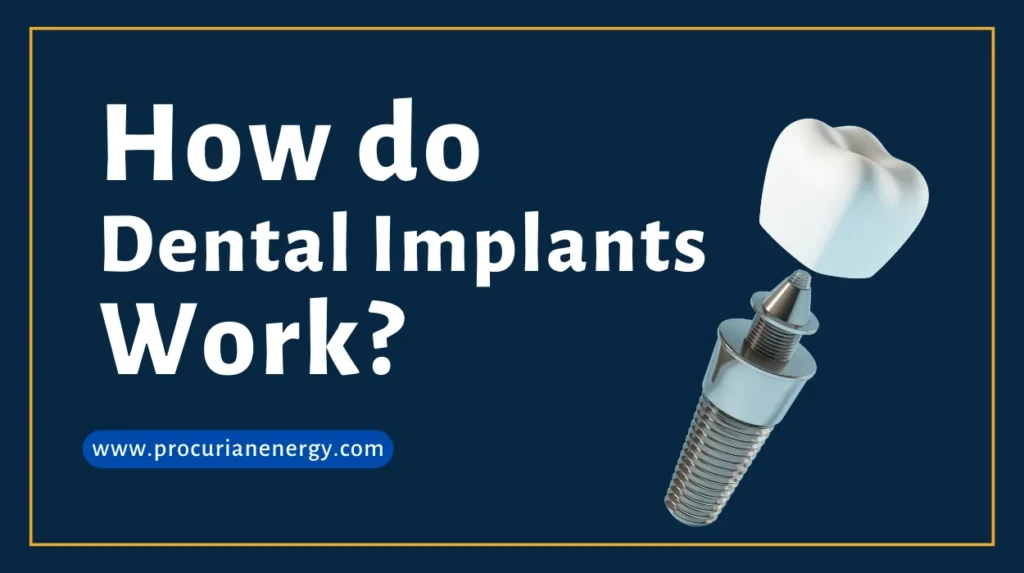
Dental implants have become a popular solution for replacing missing teeth, but like any medical procedure, it’s essential to know all your options and potential outcomes.
In this article, we’ll look at whether dental implants can be removed and how the process works if that becomes necessary.
Can Dental Implants Be Removed?
Yes, dental implants can be removed, but the process is not as straightforward as, say, removing a loose tooth. The removal process depends on various factors, such as:
- the reason for removal,
- the condition of the implant, and
- the surrounding bone and tissue.
Why would a dental implant need to be removed?

Dental implants are designed to be a long-term solution for missing teeth, but there are situations where removal may be necessary. Here are some common reasons why a dental implant might need to be removed:
① Infection ➔ If an infection occurs around the implant site, it can jeopardize the surrounding bone and tissue. In such cases, the implant may need to be removed to prevent further complications.
② Implant Failure ➔ While dental implants have a high success rate, they can fail in some instances. Factors like poor bone quality or implant misplacement can contribute to failure, leading to removal.
Related Article ➥ Free Dental Implants For Low Income
③ Allergic Reactions ➔ Though rare, some individuals may develop allergic reactions to the materials used in dental implants. If severe allergies arise, removal may be considered.
④ Peri-Implantitis ➔ This is a condition where inflammation and infection affect the tissues surrounding the implant. If not effectively treated, it can lead to implant removal.
⑤ Overloading ➔ Putting excessive pressure on an implant, especially during the healing period, can cause it to fail. In such cases, removal and replacement might be necessary.
⑥ Cosmetic Changes ➔ Your smile might change over time due to natural aging, and you may want to make adjustments to match your new look.
⑦ Upgrading ➔ Advancements in dental technology could lead to better implant options, and you may want to replace your existing implant with a more advanced one.
The Removal Process for Dental implants
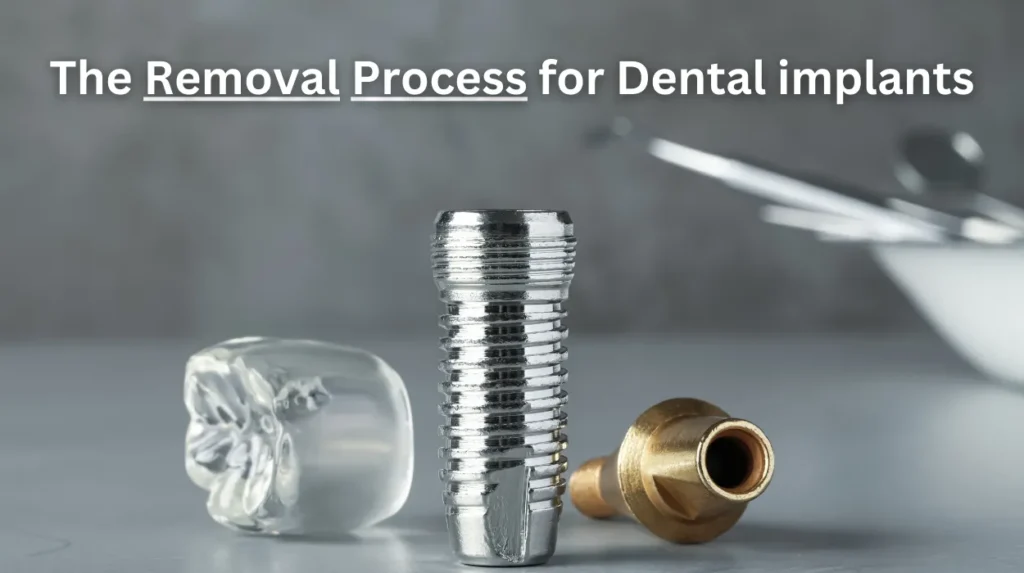
If you find yourself in a situation where dental implant removal is necessary, it’s crucial to understand the process. Here’s a step-by-step overview:
Step 1: Diagnosis ➜ The first step is to diagnose the issue and determine whether removal is indeed required. This may involve X-rays and a thorough examination by your dentist or oral surgeon.
Step 2: Local Anesthesia ➜ Before the removal procedure, you’ll receive local anesthesia to ensure you don’t feel any pain during the process.
Step 3: Implant Removal ➜ Using specialized instruments, the dentist or oral surgeon will carefully remove the implant. This can be a bit time-consuming and may involve some minor surgical procedures.
Step 4: Site Healing ➜ After removal, the surgical site will need time to heal. Depending on the situation, your dentist may recommend bone grafting or other procedures to prepare for a replacement implant in the future.
Step 5: Replacement Consideration ➜ Once the area has healed, you can discuss the possibility of replacing the removed implant with your dental provider if it’s suitable for your oral health.
Related Article ➥ How to Heal Faster After Dental Implants?
Can Dental Implants Be Replaced?
Yes, dental implants can often be replaced after removal. The ability to do so depends on several factors, including:
- the reason for removal,
- the condition of your jawbone, and
- your overall oral health.
If the removal was due to an infection, it’s crucial to ensure the infection is fully resolved before considering a replacement implant.
In cases where the implant failed due to poor bone quality, bone grafting procedures may be necessary to strengthen the jawbone before a new implant can be placed.
What to expect after dental implant removal?
Recovery time from dental implant removal varies from person to person. Most people, however, should expect some pain, swelling, and bleeding in the first few days. It’s essential to follow your dentist’s post-operative instructions carefully. This may include:
- You might be prescribed pain relievers or antibiotics.
- You may need to stick to soft foods for a few days to allow the area to heal.
- Maintaining good oral hygiene is crucial. Your dentist will advise you on how to clean the area without disturbing the healing process.
Is it painful to remove a dental implant?
Dental implant removal is a relatively painless procedure. The dentist will numb the area around the implant before removing it from the jawbone with special tools. After removing the implant, the dentist will clean the area and stitch the gums closed.
Related Article ➥ Does MetLife Dental Cover Implants?
What are the risks of removing dental implants?
Removing dental implants can have risks, like infection, damage to nearby teeth or tissues, pain and swelling, jawbone changes and replacing the implant.
FAQs
Can dental implants be taken out easily?
No, removing dental implants is a careful process done by a dentist or oral surgeon.
Why would I need to remove a dental implant?
Reasons include infection, implant failure, allergies, or peri-implantitis (inflammation).
Does it hurt to remove a dental implant?
No, you’ll receive local anesthesia to ensure you don’t feel pain.
How long does it take to remove a dental implant?
The removal process can vary but generally takes 2 to 3 hours.
Can I get a new dental implant after removal?
Yes, if your jawbone and overall oral health allow it, you can get a replacement implant.
Are dental implant removals common?
No, removals are relatively rare, as implants are designed to last.
Can I prevent the need for implant removal?
Good oral hygiene, avoiding overloading, and regular check-ups can help prevent removal.
Will my jawbone be affected by implant removal?
In some cases, jawbone health may be impacted, but it can often be treated.
How long does it take for the site to heal after implant removal?
It generally takes a 1 to 3 months for the site to heal after implant removal.
Can I eat normally after implant removal?
You may need to adjust your diet temporarily to avoid discomfort.
Is dental implant removal the same as a tooth extraction?
No, the procedures are different as dental implants involve the jawbone.
What are the signs of implant problems that may lead to removal?
Signs like pain, swelling, infection, and implant mobility.
Final Thoughts
Dental implants can be removed, but the process can be more complicated than getting them in the first place. The method of removal depends on the reason for removal and the condition of the implant and surrounding tissues.
Remember, prevention is always the best approach, so take good care of your dental implants by practicing excellent oral hygiene and following your dentist’s recommendations.
If you have any questions or concerns about dental implants, don’t hesitate to comment down below. Your smile and oral health are worth it!
